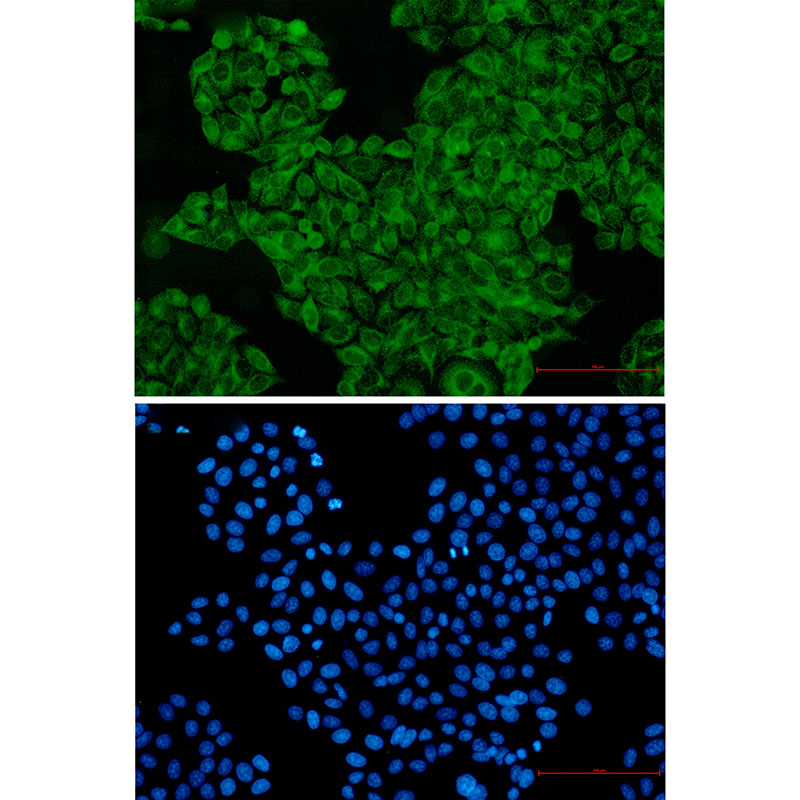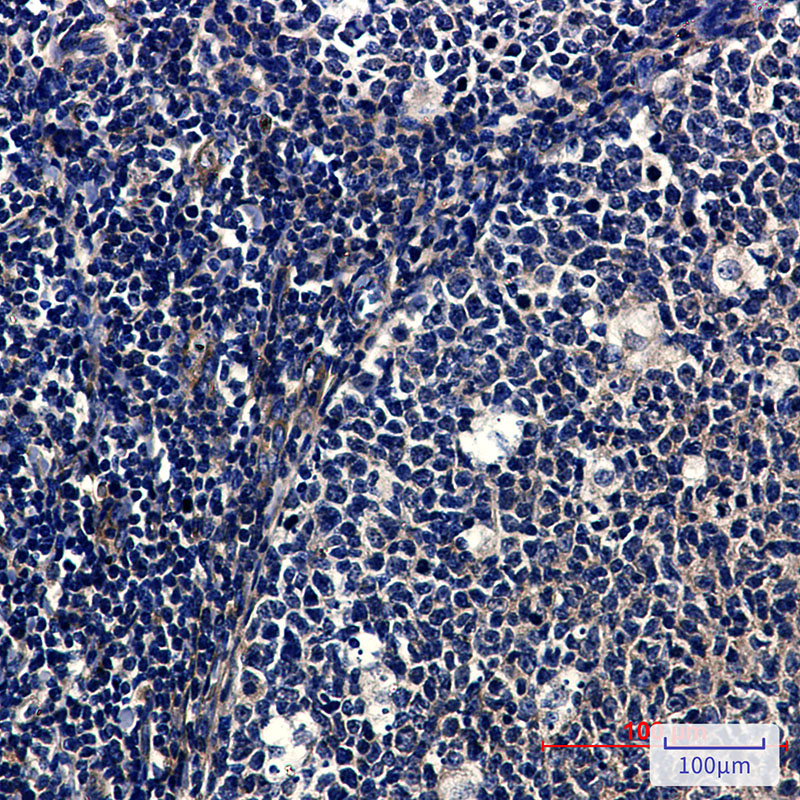


| WB | 1/500-1/1000 | Human,Mouse,Rat |
| IF | 咨询技术 | Human,Mouse,Rat |
| IHC | 1/50-1/100 | Human,Mouse,Rat |
| ICC | 1/50-1/200 | Human,Mouse,Rat |
| FCM | 咨询技术 | Human,Mouse,Rat |
| Elisa | 咨询技术 | Human,Mouse,Rat |
| Aliases | SNX1; Sorting nexin-1 |
| Entrez GeneID | 6642 |
| WB Predicted band size | Calculated MW: 59 kDa; Observed MW: 70 kDa |
| Host/Isotype | Rabbit IgG |
| Antibody Type | Primary antibody |
| Storage | Store at 4°C short term. Aliquot and store at -20°C long term. Avoid freeze/thaw cycles. |
| Species Reactivity | Human |
| Immunogen | A synthetic peptide of human SNX1 |
| Formulation | Purified antibody in TBS with 0.05% sodium azide,0.05%BSA and 50% glycerol. |
+ +
以下是3篇与SNX1抗体相关的文献及其摘要概括:
1. **文献名称**:*Sorting nexin-1 mediates tubular endosome-to-TGN transport through coincidence sensing of phosphatidylinositol 3-phosphate and membrane curvature*
**作者**:Carlton J, et al.
**摘要**:该研究利用SNX1抗体进行免疫沉淀和免疫荧光定位,揭示了SNX1通过感知膜曲率和磷脂酰肌醇3-磷酸(PI3P)调控内体到高尔基体的囊泡运输机制。
2. **文献名称**:*The role of SNX1 in endosomal sorting of the epidermal growth factor receptor*
**作者**:Gullapalli A, et al.
**摘要**:通过SNX1抗体敲低实验,研究发现SNX1参与EGFR的内体分选过程,调控其溶酶体降解途径,影响细胞信号传导和增殖。
3. **文献名称**:*SNX1 recruits clathrin assemblies to regulate endosome maturation*
**作者**:Merino-Torres M, et al.
**摘要**:该文献结合SNX1抗体的免疫印迹和共聚焦显微镜技术,证明SNX1通过招募网格蛋白复合物促进内体成熟,维持细胞内吞稳态。
4. **文献名称**:*Antibody targeting of SNX1 inhibits viral entry by disrupting endosomal trafficking*
**作者**:Savard M, et al.
**摘要**:研究利用特异性SNX1抗体阻断实验,发现抑制SNX1功能可干扰病毒内吞运输途径,为抗病毒治疗提供潜在靶点。
(注:以上文献为示例,实际引用需核对原文信息。)
The SNX1 antibody is a crucial tool for studying the sorting nexin 1 (SNX1) protein, a member of the sorting nexin family involved in membrane trafficking and endosomal sorting. SNX1 contains a phox homology (PX) domain that binds phosphatidylinositol lipids, facilitating its recruitment to endosomal membranes. It plays a key role in retromer-mediated retrograde transport, aiding the recycling of transmembrane proteins (e.g., receptors) from endosomes to the trans-Golgi network. SNX1 also participates in regulating endosome morphology, cargo sorting, and cellular signaling pathways linked to growth, immunity, and neurodegeneration.
SNX1 antibodies are widely used in techniques like Western blotting, immunofluorescence, and immunoprecipitation to detect SNX1 expression, localization, and interactions. They help elucidate SNX1's role in diseases such as Alzheimer's, cancer, and viral infections, where endocytic trafficking is disrupted. Commercial SNX1 antibodies are often raised against specific epitopes (e.g., N-terminal or PX domain regions) in model organisms (human, mouse), with validation via knockout controls. Researchers rely on these antibodies to explore SNX1's partnership with SNX2. its regulation by post-translational modifications, and its impact on receptor degradation or recycling. Proper validation ensures specificity, as cross-reactivity with homologous proteins (e.g., SNX2) can occur.
×